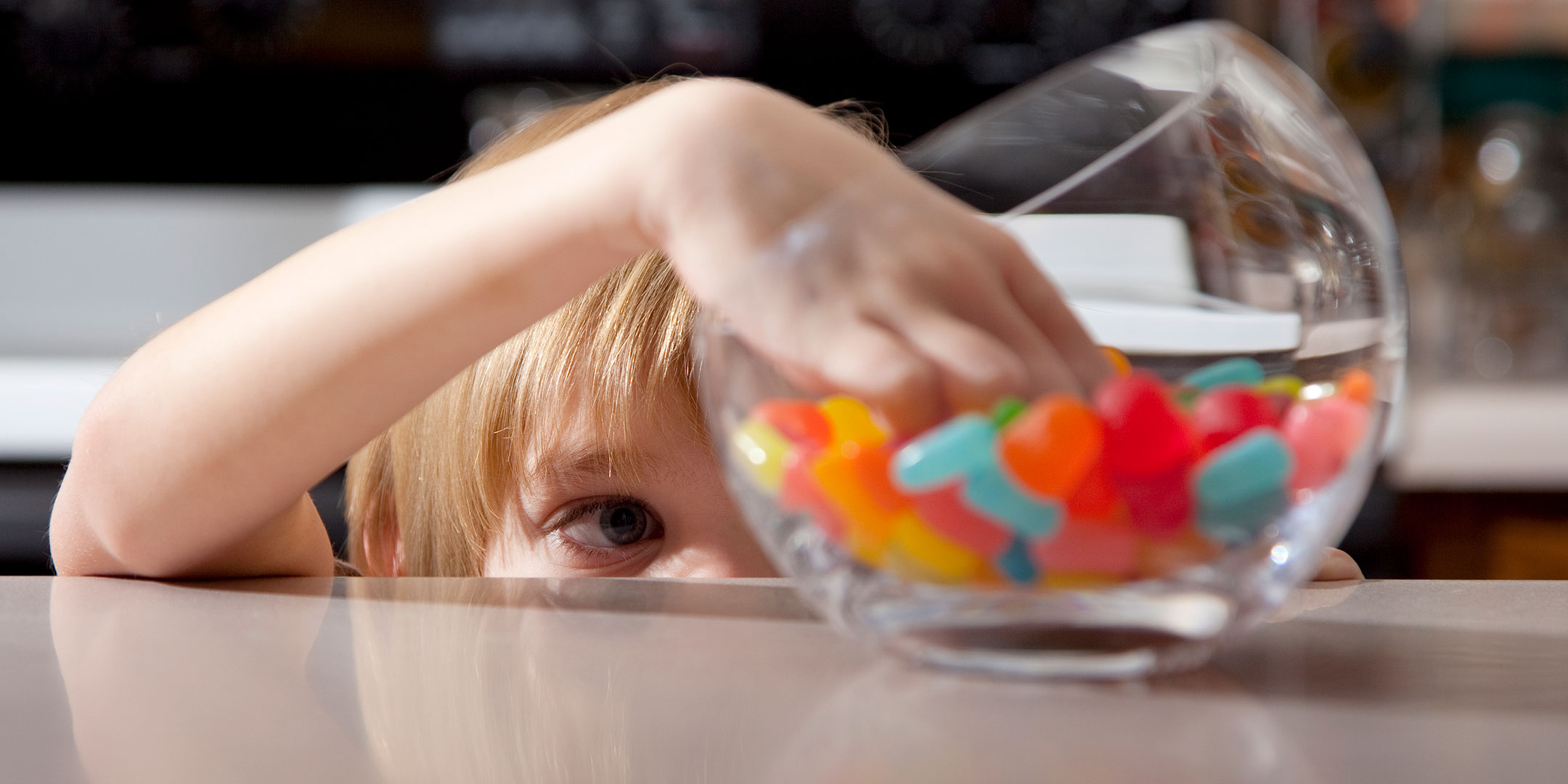This is Part One of a three-part series on Conscious Discipline consequences. Read Part Two and Part Three for more information on effective consequences.
Conscious Discipline offers solutions for social-emotional learning, discipline and self-regulation. The goal is to help parents and schools reach and teach every child. Once instilled, these essential skills will last a lifetime and positively impact generations to come.
A common misconception about Conscious Discipline is that there are no consequences. The reality is that Conscious Discipline has effective consequences instead of traditional consequences. The first six powers and skills of Conscious Discipline build a foundation that makes effective consequences possible.
Building that foundation takes time, but the payoff is huge! Effective consequences motivate children to make permanent positive changes in their behavior. This is something that quick fixes like time-outs, spankings, and even reward systems can never achieve.
Why Punishments (Traditional Consequences) Don’t Work
Before we can discuss why, we first must face the truth: Punishments don’t work. Because our belief in punishment has been deeply ingrained for generations, this truth isn’t easy to accept.
But if punishment works, why have all of us been punished at some point, only to repeat the behavior? Why are the same students punished over and over? Why are prison recidivism rates so high?
Punishment doesn’t work, and here’s why:
- Punishments are all about us and our judgment of the behavior, rather than about the child’s actions and how they have impacted others.
- Punishments don’t ask children to reflect on their actions or take personal responsibility.
- They don’t ask children to recognize or manage their emotions.
- They don’t teach missing skills.
- They don’t intrinsically motivate children to change their behavior.
Instead, punishments intimidate children into compliance (or into lying and manipulating). Do we want children to behave because they’re scared of punishment and want to please us, or do we want them to behave because they’ve truly learned a better way?
Punishment also teaches children to rely on the judgment of others to dictate their behavior. This may work out while they’re young and the “other” is an adult. But what about when they grow into teenagers and the “others” become their peers?
The truth is this: Punishments don’t work. This isn’t just feel-good fluff; it’s brain science.
Punishments vs. Consequences
The good news is that consequences—effective ones—do work! We often use the terms “punishment” and “consequence” interchangeably, but they are not the same. The table below illustrates a few key differences:
| Punishments | Consequences |
| Make children suffer for having a problem | Teach children how to solve problems |
| Cause children to fear making mistakes | Show children that mistakes are opportunities to learn |
| Rely on judgement | Rely on reflection and personal responsibility |
| Provide extrinsic motivation to please others and avoid physical/emotional pain | Provide intrinsic motivation to use or learn new skills |
| Focus on what not to do | Focus on what to do instead |
The Power of Intention
Before deciding how to discipline a child, ask yourself: What is my intention? You have a few choices:
- Punitive Intent: The goal is to make children feel bad about themselves or guilty for what they have done. It says, “Don’t feel what you’re feeling; feel what I tell you to feel.” As a result, children often blame, defend, and deflect instead of accepting responsibility.
- Permissive Intent: The goal is to rescue children from discomfort by saving them from the consequences of their actions, sending the message, “Feelings are bad,” or, “You are incapable of handling your feelings.” This teaches entitlement instead of responsibility.
- Motivational Intent: The goal is to help children reflect on how they feel about the impact of their choices, so they can take responsibility for their actions. It says, “Did you achieve your desired outcome? If not, how did you feel about it? What other strategies could you use next time?”
If your intent is to motivate, you must first gain your own composure before addressing the child. Otherwise, you will default to the mannerisms and language used by your own parents or authority figures when disciplining you. If these actions were punitive rather than productive, this will likely throw the child into the lower centers of the brain. There, reflection is impossible, rendering consequences ineffective.
You can gain composure by:
- S.T.A.R. breathing (three deep belly breaths)
- Telling yourself, “I’m safe. Keep breathing. I can handle this.”
- Wishing the child well and re-framing the child’s action as an “Oops”
- Q.T.I.P. (Quit Taking It Personally) and preparing to problem-solve
Once you’ve gained your composure, you’re ready to facilitate an effective consequence. Below, we’ll look at the key ingredients of effective consequences.
Ingredients of Effective Consequences
The power of consequences does not lie in the outcome. The true power of consequences comes from how we feel about the outcome.
Let’s say you’ve built a poorly constructed bike ramp. Gleefully ignoring warnings from your parents, you ride up the ramp. You fall, but you land softly and safely on the grass. Is this enough to dissuade you from using the ramp again? Probably not. More likely, you shout, “That was AWESOME!” and go again.
But this time—BAM! You land with a loud smack on the concrete. Everything hurts. Now, you say, “I’m never getting on that bike ramp again!” Both times, the outcome of using the ramp was the same (you fell). The difference was how the outcome made you feel. All consequences work the same way.
For consequences to be effective, children (and adults) must:
- Be connected.
- Learn to stop and reflect on their choices and outcomes.
- Be able to take personal responsibility for the consequences of their actions.
This may sound like a tall order, but Conscious Discipline is designed to build this essential foundation. Let’s take a look at how Conscious Discipline wires the brain for connection, reflection, personal responsibility, and—ultimately—lasting change.
Connection
Healthy connections promote problem-solving and thriving. Unhealthy connections promote defensive survival skills in efforts to feel safe.
Caring or willingness comes from a relationship with others (connection). Disconnected children don’t care, so no consequence or punishment will work. This is one reason we often see the same children punished over and over.
Conscious Discipline emphasizes connection through empathy, encouragement, the School Family, I Love You Rituals, the Brain Smart Start, and more.
Once children are connected, they are more willing to see from another’s point of view and understand the impact of their behavior on others. They feel safe enough to reflect on their choices and try a better way.
Reflection
For a consequence to make a lasting impact, children must stop and reflect on their choices and outcomes.
To reflect on their actions, children must be in the higher center of their brain (the executive state). Only in the executive state can individuals pay attention, feel empathy for others, reflect and solve problems. Additionally, it is only in the executive state that children will remember and retain lessons learned.
This is another reason that your composure is so essential. Disciplining a child from a place of anger is ineffective every time. We must help the child feel calm and safe, so they can understand the impact of their behavior and find alternative solutions.
As children reflect, it’s crucial that they reflect without judgement. When you “beat yourself up” after making a mistake, it pushes you into the lower centers of your brain. In Conscious Discipline, we use the skill of “noticing” to teach children to reflect without judgement.
In Part Two of this series, we’ll also show you how to help children make the connection between their choices and the resulting outcomes or consequences. Plus, we’ll give you skills to teach them alternative solutions.
Personal Responsibility
Consequences only work when children take responsibility for their actions by taking ownership of their feelings.
For children to take responsibility, we must teach them that THEY are in charge of their feelings. Whoever or whatever you believe to be in charge of your feelings has the power to change them.
Until children recognize this, it will always be someone else’s fault—and someone else who needs to change. You’ve heard it before: the teacher doesn’t like me, all my friends were doing it, you’re so mean, and the list goes on. As long as children deflect blame, they won’t recognize the need for personal growth and change. As a result, they’ll repeat the same behavior again.
Of course, you can’t own or regulate emotions that you aren’t conscious of having. Conscious Discipline teaches children to name their emotions, regulate them, and then solve problems.
This starts with our ability to offer empathy when a child is in a state of upset. Empathy is what allows children to take responsibility for their actions instead of projecting their fear of being “caught” outward as anger and blame. This requires us to be aware of our triggers and use processes like D.N.A. (Describe body, Notice feeling, Acknowledge intent or desire).
Gradually, children learn to describe and label their own emotions with support from tools like the Safe Place, S.T.A.R breathing, and Feeling Buddies.
Final Thoughts
At Conscious Discipline, we do believe in consequences. But we also understand that these consequences will accomplish nothing without the proper foundation. This foundation consists of safety, connection, and the ability to solve problems by reflecting and taking personal responsibility.
If this sounds like a lot, that’s because it is. It does require effort, time, and commitment. But the results are more than worth the investment. You’ll teach children valuable skills and lessons that will last a lifetime.
So, it’s not true that Conscious Discipline doesn’t have consequences. In fact, Conscious Discipline is ALL about consequences. It teaches us to become aware of our thoughts, feelings, and actions—and how they impact others. Without consciousness, there are no consequences.
Up Next: Read Part Two and Part Three to learn about the three types of consequences and get answers to your frequently asked questions.
Upcoming Events
- Conscious Discipline Institute in New Albany, IN: Summer Educator Event
- Conscious Discipline Institute: Birth to Five Years: Summer Education Event in Orlando, FL
- Conscious Discipline Institute in Cincinnati, OH: Summer Educator Event
- Conscious Discipline Advanced Institute in Navasota, TX: Advanced Educator Event
- Conscious Discipline Institute: Birth to Five Years: Education Event in Las Vegas, NV
- Elevate Conscious Discipline: Teacher Conference in Orlando




